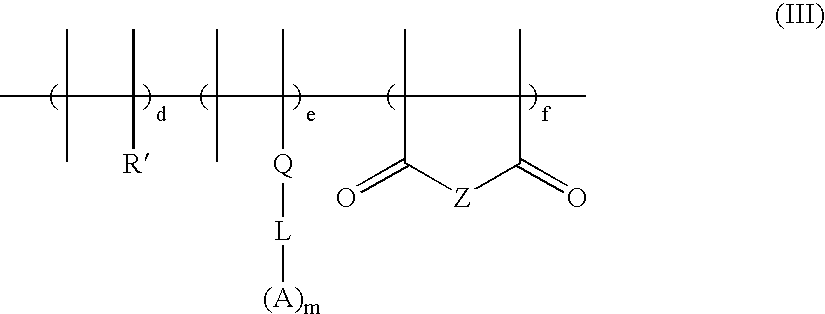Core-shell particles for electrophoretic display
a technology of electrophoretic display and core shell particles, which is applied in the direction of static indicating devices, instruments, separation processes, etc., can solve the problems of consuming a great deal of power for the backlight and color filter used in the device, and reducing the efficiency of the backlight system, etc., to achieve low specific gravity, high refractive index, and low cost
- Summary
- Abstract
- Description
- Claims
- Application Information
AI Technical Summary
Benefits of technology
Problems solved by technology
Method used
Image
Examples
example 1
[0091]5 Gm of PMMA beads (mean particle size=1.3 microns, from H.W. Sands Corp., Jupiter, Fla.) were dispersed with a homogenizer into 500 gm of an aqueous solution containing 0.3 M hydrochloride, 0.27 M of TiCl4, 0.025 Gm of sodium dodecyl sulfate and 0.25 gm of polyvinylpyrrolidone (MW 10,000 from Aldrich). The dispersion was transferred to a pressurized microwave-transparent Pyrex flask and allowed to react at about 180° C. for 40 minutes with gentle stirring at 2.45 GHz frequency in a microwave oven equipped with two 900 W magnetrons. The product was filtered and washed with methanol several times and then dried in a vacuum oven. The specific gravity was estimated to be about 2.1 with a uniform layer of rutile titania on the PMMA beads. 5 Parts of the resultant core (PMMA)-shell (titania) particles were dispersed with a homogenizer into 10 parts of a 5% methanol solution of a copolymer of 4-vinylpyridine (90%) and butyl methacrylate (10%) (PVPy-BMA) (from Aldrich), spray-dried a...
example 2
[0092]The procedure of Example 1 was repeated except that the resultant titania / PMMA particles were heated to 400° C. at a heating rate of 2° C. / min to degrade the PMMA and form voids in the core. The resultant EPD dispersion showed an improved contrast ratio and switching rates as measured between two ITO plates with a 35 μm spacer.
example 3
[0093]10 Gm of silica particles SP-1B (mean particle size=1 μm, from Fuso Chemical Co., Osaka, Japan) are dispersed in 500 gm of an aqueous 0.35 M hydrochloride solution containing 0.28 M of TiCl4 and 0.2 gm of polyvinylpyrrolidone (MW 10,000 from Aldrich). The dispersion is homogenized at 7,000 RPM for 3 minutes, transferred to a pressurized microwave-transparent Pyrex flask and heated to 200° C. with gentle stirring for 1 hour at 2.45 GHz frequency in a microwave oven equipped with two 900 W magnetrons, filtered and washed with methanol several times then dried in a vacuum oven. The estimated core-shell ratio is about 15% corresponding to a shell thickness of 0.15 micron. The specific gravity is estimated to be about 2.6 with a uniform layer of rutile titania on the silica core. 5 Parts of the resultant core (PMMA)-shell (titania) particles are dispersed with a homogenizer into 10 parts of a 5% methanol solution of a copolymer of 4-vinylpyridine (90%) and butyl methacrylate (10%) ...
PUM
| Property | Measurement | Unit |
|---|---|---|
| specific gravity | aaaaa | aaaaa |
| diameter | aaaaa | aaaaa |
| diameter | aaaaa | aaaaa |
Abstract
Description
Claims
Application Information
 Login to View More
Login to View More - R&D
- Intellectual Property
- Life Sciences
- Materials
- Tech Scout
- Unparalleled Data Quality
- Higher Quality Content
- 60% Fewer Hallucinations
Browse by: Latest US Patents, China's latest patents, Technical Efficacy Thesaurus, Application Domain, Technology Topic, Popular Technical Reports.
© 2025 PatSnap. All rights reserved.Legal|Privacy policy|Modern Slavery Act Transparency Statement|Sitemap|About US| Contact US: help@patsnap.com



